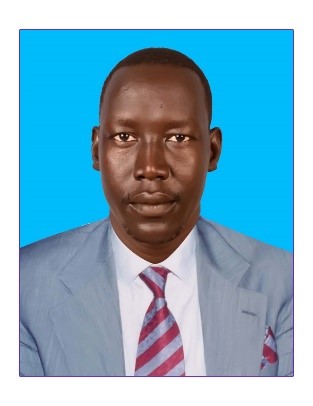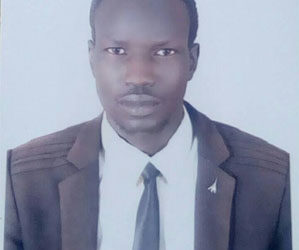By Bek Dhuorjang Chol
Since establishing South Sudan as an independent country in 2011, its education sector has faced intensified challenges.
A recent interview conducted by Emmanuel Joseph Akile of Eye Radio with Dr. Kuyok Abuol Kuyok, the undersecretary of the national Ministry of General Education and Instruction, on February 16, 2024. Dr Kuyok highlighted that the country is facing the blatant reality of which 20% of primary and secondary school teachers in the country are professionally qualified. With 64,000 teachers serving across the community and public schools, just 15,360 teachers meet the qualification standards necessary for effective education.
Recalling a study I conducted in Juba and some states and administrative areas, several challenges were observed and can be termed as South Sudan education crisis and is not only limited to shortage of qualified teachers but the whole sector continues suffering from a range of systematic issues worsened by the political wrangling turned to civil war, economic deterioration, and armed and communal violent conflict. Accessibility, equity, and high adult illiteracy rates have also created a bid gap and malfunction in the education sector across the three levels of government in the country. Many schools have been forced to close and devastated, and others have been occupied by militants and displaced civilians, causing students to drop out.
The State of Teacher Qualifications
As highlighted by the undersecretary, Northern Bahr el Ghazal state alone has 9,000 teachers, and only 2,000 have the necessary qualifications. The unqualified and unskilled teachers who also need more capacity building and motivational factors are the ones running both the primary and secondary schools. I have witnessed this scenario in most areas I visited and a number of schools across the country in 2018, 2021, 2022 and 2023. The reliance on unqualified teaching staff not only compromises the quality of education but also fails to inspire confidence in the system. That’s why most government officials take their children to study in other countries such as Kenya, Uganda, Australia, the UK etc. This trend of relying on unqualified teachers penetrated the entire system, with 24 694 government-employed teachers identified as low or completely unqualified. The consequences of these statistics are alarming and include poor and irregular payments, leading to a high turnover rate as qualified teachers leave for better opportunities. So, providing quality, free, and accessible education for all remains a greater challenge. 52% of primary and secondary school teachers have either only primary school education, limited lower secondary education or their status was unknown. Most teachers were not trained due to insufficient Teacher Training Institutes (TTIs) to produce a new generation of teachers. Lack of orientation opportunities to implement the New National Curriculum and education policy documents in schools results in teachers resorting to what they know. There needed to be more dissemination of teachers’ code of conduct and adequate rules for promoting and upgrading long-serving and deserved teachers. Insignificant accountability and poor management of the education sector at the lower level are due to unqualified staff running the educational institutions. This problem persists in Greater Pibor Administrative areas, some parts of Eastern Equatoria, Warrap, Unity, Lakes and Upper Nile states.
Challenges beyond Teacher Qualification
The educational landscape in South Sudan is riddled with challenges that go beyond the issue of teacher qualifications. The sector has been severely affected by political instability, particularly the civil war following the December 2013 crisis, which led to school closures, displacements and a general state of disarray. Financial educational allocations have consistently fallen short of the General Education Act 2012’s mandate for a 10% budgetary allocation, with actual educational spending fluctuating between 3.7% and 8.6% since 2011. Innovative financial strategies, such as increasing the education sector’s share of the national budget, implementing efficient and transparent fund management systems, and exploring alternative funding sources (including Public-Private Partnerships), could provide a more stable financial foundation for education reforms. The government must discourage investments in hotels, bars, cars, and non-essential businesses and encourage PPP in services such as education, health, road, water, food, etc. The deficient payment caused unnecessary delays in teachers’ salaries and funding of education programmes. This has demoralized most teachers, hence resulting in high turnover. The EU teachers’ incentives and cash transfers were insufficient due to the country’s economic hyperinflations.
Infrastructure and Resources Shortage
Physical infrastructure and educational resources are in dire shortage. A significant portion of schools operate in semi-permanent structures, 35% or entirely on open-air, and 25% with no seat/school desk for learners, making effective teaching and learning challenging. Furthermore, there is an acute lack of educational learning materials, such as textbooks and a national curriculum, a lack of manuscripts for school attendance and records, and there was no curriculum and syllabi for Alternative Education System (AES) and Technical and Vocation Education Training (TVET), Science, Technology, Engineering and Math (STEM); hence all hampering the quality of education. During the dry seasons, many pupils drop out due to a lack of feeding and drinking water; hence, enrolment and retention rates are reduced. Poor governmental inspection and supervision due to lack of means of transport and mobility. Female teachers were fewer than their male counterparts at primary and secondary levels. Lack of teachers’ quarters, i.e., most teachers from different states and counties deployed in their respective schools have no accommodation facilities. There was also a variation in the school calendar. Some schools were using the New Sudan Curriculum (a curriculum established during the war in the liberated areas in southern Sudan, southern Blue Nile and Nuba Mountains), while other schools were using textbooks from neighbouring countries such as Uganda, Kenya, Ethiopia, Sudan or a hybrid depending on what resources were available. Though the National Ministry of General Education and Instruction has come up with a unified National Curriculum, the situation is still persisting.
Another point is the lack of sporting and recreational facilities and sports kits. International partners do not support most secondary schools. As such, there were no feeding programmes or school gardens. St. Bakhita primary and secondary schools in Narus, Loreto School in Rumbek, and other church schools across the country are doing their best compared to government-funded schools. They hired qualified teachers and God-fearing men and women. Some schools were located in relatively inaccessible areas or at a long distance, making it difficult for the learners and teachers to continue the teaching and learning process.
Child protection and insecurity or armed conflict are other issues to look at, combined with a long walk to school affected most of the learners I talked to, mostly girls. Community involvement in education activities and development was not realized.
Socio-Economic and Environmental Challenges
The education sector across the country is impacted by socio-economic and environmental factors, including high dropout rates of learners due to hunger and insufficient inspection and supervision of schools. These issues are compounded by a general scarcity of learning materials and inadequate school facilities, which severely limits access to quality education for many children, estimated 1.8 million out-of-school children.
A closer look at the successful case studies in similar contexts
Examining successful education reform efforts in similar post-conflict contexts offers valuable lessons for us. For instance, Rwanda’s focus on teacher training, curriculum development, and community involvement in education has significantly improved its educational outcomes. Similarly, in Liberia, government and private organizations have introduced new teacher training and accountability methodologies. These case studies suggest that comprehensive reforms addressing teacher qualifications, curriculum relevance, infrastructure and community engagement, supported by strong political will and adequate funding, can substantially improve educational quality and access.
The path forward
To address these multiple challenges stressed above, South Sudan needs a comprehensive reform strategy that encompasses increasing funding for education, enhancing teacher training and qualification, improving infrastructure, and ensuring stability and peace. Adequate investment in education is non-negotiable. The government must prioritize education within its budget, aiming or exceeding the General Education Act 2012’s stipulation of allocating at least 10% of the annual budget to general education.
Recruitment and training of qualified teachers must be launched to increase the proportion of qualified teachers significantly. This includes hiring certified educators and offering ongoing professional development to enhance teaching skills and methodologies (pedagogy and andragogy).
Building and maintaining school facilities, providing essential learning materials, and ensuring access to clean drinking water and sanitation are fundamental to creating an environment conducive to learning.
Collaboration with international partners like UNESCO, UNICEF, GESS, etc., to mention but a few remain vital in these efforts. Promoting strong domestic partnerships and community involvement is equally important for sustainable progress. The government of South Sudan has been relying on international education partners for a long time, and this significant dependency on external support for fundamental educational services and reforms is incorrect. The government must pull its socks to handle this key sector. We need to build a more self-sufficient educational framework by strengthening our internal capacities and governance structures to ensure international partnerships complement rather than substitute national education strategies.
The world is promptly changing as the knowledge and innovative drivers for the development of nations are widely increasing. The education quality, teaching and learning processes are becoming important factors of individual well-being and progress of nations, hence developing the quality of human beings and making the future much more promising. Our system must prepare graduates for the labour market. With education, the world has witnessed reduced poverty, infant mortality, and control of population growth. It empowers women and contributes to gender equality. Educated parents pass on their knowledge more naturally by sending their children to school. The UNESCO has placed 38% of the South Sudanese as literate, indicating a high illiteracy rate yet. Hence, the ongoing communal conflict can be attributed to it.
In conclusion, the state of education in the country requires immediate and concerted efforts from all stakeholders. Prioritizing education is a cornerstone of development, empowerment, peace, democracy, and sustainable development. It is a collective responsibility to ensure that future generations have the knowledge, skills, and values necessary to contribute positively to society and the global community. As such, it’s imperative for South Sudan to overcome its current challenges to provide its citizens with the quality education they deserve. The endeavour is not just about fulfilling a fundamental human right; it’s about laying the groundwork for a stable, prosperous and equitable society.
The writer is a lecturer




